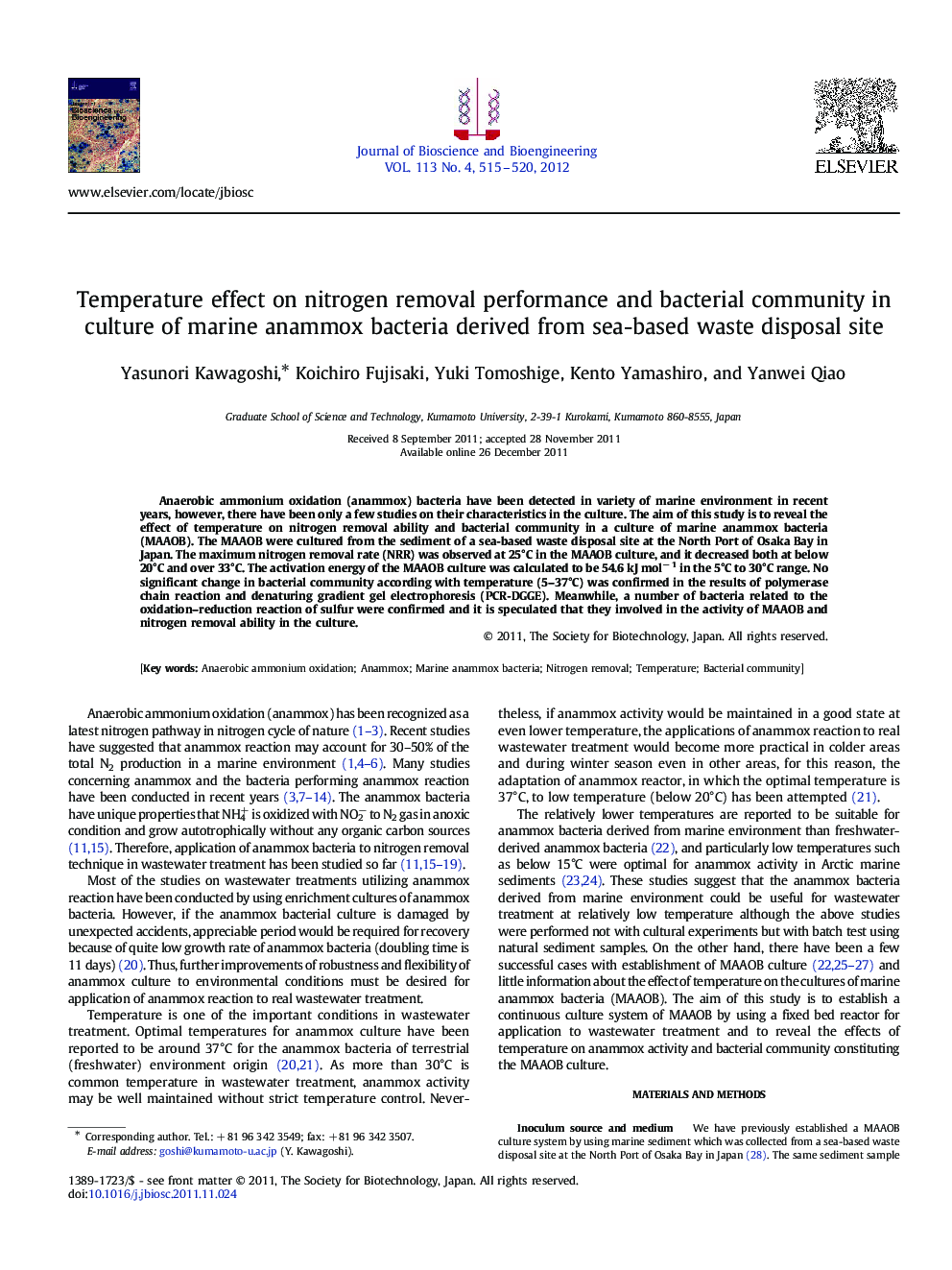| Article ID | Journal | Published Year | Pages | File Type |
|---|---|---|---|---|
| 21316 | Journal of Bioscience and Bioengineering | 2012 | 6 Pages |
Anaerobic ammonium oxidation (anammox) bacteria have been detected in variety of marine environment in recent years, however, there have been only a few studies on their characteristics in the culture. The aim of this study is to reveal the effect of temperature on nitrogen removal ability and bacterial community in a culture of marine anammox bacteria (MAAOB). The MAAOB were cultured from the sediment of a sea-based waste disposal site at the North Port of Osaka Bay in Japan. The maximum nitrogen removal rate (NRR) was observed at 25°C in the MAAOB culture, and it decreased both at below 20°C and over 33°C. The activation energy of the MAAOB culture was calculated to be 54.6 kJ mol− 1 in the 5°C to 30°C range. No significant change in bacterial community according with temperature (5–37°C) was confirmed in the results of polymerase chain reaction and denaturing gradient gel electrophoresis (PCR-DGGE). Meanwhile, a number of bacteria related to the oxidation–reduction reaction of sulfur were confirmed and it is speculated that they involved in the activity of MAAOB and nitrogen removal ability in the culture.
